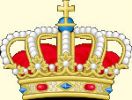 La Familia Total
La Familia Total
EDWARD II de INGLATERRA
-
Nombre EDWARD II de INGLATERRA Nacimiento 25 Abr 1284 Caernarfon Castle (Gwynedd, Wales) 
Sexo Varón Inf1 Bet. 07 Jul 1307 - Ene 1327 REY de INGLATERRA, despuesto en enero y asesinado en septiembre 
Inf2 acusado de relaciones homosexuales son su favorito Piers Gaveston, fue obligado a abdicar tras una rebelión de los barones y la iglesia, encabezada por la Reina consorte Isabelle de Francia Número de Referencia 8459 Fallecimiento 21 Sep 1327 Berkeley Castle (Gloucestershire, England) 
Enterrado/a Gloucester cathedral (England) 
ID Persona I8355 Familia Total Última Modificación 23 Jul 2021
Padre EDWARD I de INGLATERRA, n. 17 Jun 1239, Westminster, London (England)  , f. 7 Jul 1307, Burgh by Sands -Brough- (Cumberland, England)
, f. 7 Jul 1307, Burgh by Sands -Brough- (Cumberland, England)  (Edad 68 años)
(Edad 68 años) Madre Leonor de CASTILLA, n. 1241, Burgos (España)  , f. 28 Nov 1290, Harby (Nottinghamshire, England)
, f. 28 Nov 1290, Harby (Nottinghamshire, England)  (Edad 49 años)
(Edad 49 años) Casado 1 Nov 1254 Santa María la Real de las Huelgas (Burgos) 
ID Familia F3761 Hoja del Grupo | Family Chart
Familia Isabelle "la Louve de France" de FRANCIA, n. ca 1295, Paris (France)  , f. 22 Ago 1258, Hertford Castle (Hertfordshire, England)
, f. 22 Ago 1258, Hertford Castle (Hertfordshire, England) 
Casado 25 Ene 1308 Boulogne-sur-Mer (Pas-de-Calais, France) 
Hijos + 1. EDWARD III de INGLATERRA, n. 13 Nov 1312, Windsor Castle (Berkshire, England)  , f. 21 Jun 1377, Sheen Palace, Richmond (London, England)
, f. 21 Jun 1377, Sheen Palace, Richmond (London, England)  (Edad 64 años)
(Edad 64 años)Última Modificación 23 Jul 2021 ID Familia F6582 Hoja del Grupo | Family Chart
-
Mapa del Evento  = Enlace a Google Earth
= Enlace a Google Earth Leyenda del Marcador  : Dirección
: Dirección
 : Ubicación
: Ubicación
 : Ciudad/Pueblo
: Ciudad/Pueblo
 : Municipio/Alcaldía
: Municipio/Alcaldía
 : Estado/Provincia
: Estado/Provincia
 : País
: País
 : No Establecido
: No Establecido
-
Fotos 
REY
-
Notas - Edward had a close and controversial relationship with Piers Gaveston, who had joined his household in 1300. The precise nature of their relationship is uncertain; they may have been friends, lovers, or sworn brothers. Edward's relationship with Gaveston inspired Christopher Marlowe's 1592 play Edward II, along with other plays, films, novels and media. Gaveston's power as Edward's favourite provoked discontent both among the barons and the French royal family, and Edward was forced to exile him. On Gaveston's return, the barons pressured the king into agreeing to wide-ranging reforms, called the Ordinances of 1311. The newly empowered barons banished Gaveston, to which Edward responded by revoking the reforms and recalling his favourite. Led by Edward's cousin Thomas, 2nd Earl of Lancaster, a group of the barons seized and executed Gaveston in 1312, beginning several years of armed confrontation. English forces were pushed back in Scotland, where Edward was decisively defeated by Robert the Bruce at the Battle of Bannockburn in 1314. Widespread famine followed, and criticism of the king's reign mounted.
The Despenser family, in particular Hugh Despenser the Younger, became close friends and advisers to Edward, but Lancaster and many of the barons seized the Despensers' lands in 1321, and forced the king to exile them. In response, Edward led a short military campaign, capturing and executing Lancaster. Edward and the Despensers strengthened their grip on power, formally revoking the 1311 reforms, executing their enemies and confiscating estates. Unable to make progress in Scotland, Edward finally signed a truce with Robert. Opposition to the regime grew, and when Isabella was sent to France to negotiate a peace treaty in 1325, she turned against Edward and refused to return. Instead, she allied herself with the exiled Roger Mortimer, and invaded England with a small army in 1326. Edward's regime collapsed and he fled to Wales, where he was captured in November. The king was forced to relinquish his crown in January 1327 in favour of his 14-year-old son, Edward III, and he died in Berkeley Castle on 21 September, probably murdered on the orders of the new regime.
Edward's contemporaries criticised his performance as king, noting his failures in Scotland and the oppressive regime of his later years, although 19th-century academics later argued that the growth of parliamentary institutions during his reign was a positive development for England over the longer term.
- Edward had a close and controversial relationship with Piers Gaveston, who had joined his household in 1300. The precise nature of their relationship is uncertain; they may have been friends, lovers, or sworn brothers. Edward's relationship with Gaveston inspired Christopher Marlowe's 1592 play Edward II, along with other plays, films, novels and media. Gaveston's power as Edward's favourite provoked discontent both among the barons and the French royal family, and Edward was forced to exile him. On Gaveston's return, the barons pressured the king into agreeing to wide-ranging reforms, called the Ordinances of 1311. The newly empowered barons banished Gaveston, to which Edward responded by revoking the reforms and recalling his favourite. Led by Edward's cousin Thomas, 2nd Earl of Lancaster, a group of the barons seized and executed Gaveston in 1312, beginning several years of armed confrontation. English forces were pushed back in Scotland, where Edward was decisively defeated by Robert the Bruce at the Battle of Bannockburn in 1314. Widespread famine followed, and criticism of the king's reign mounted.
